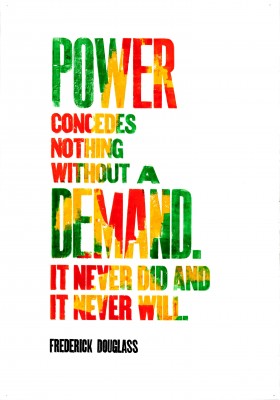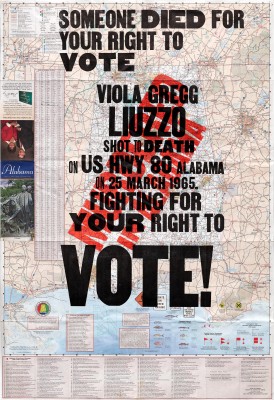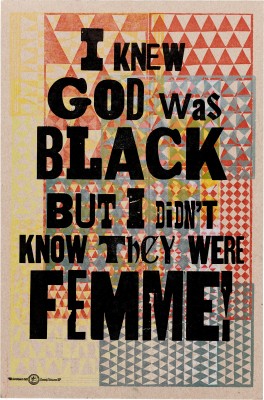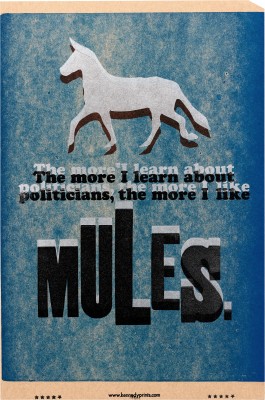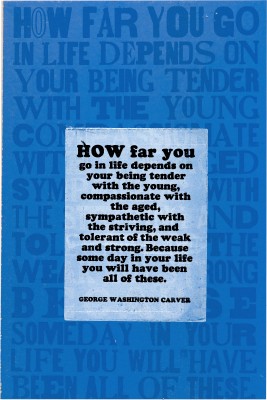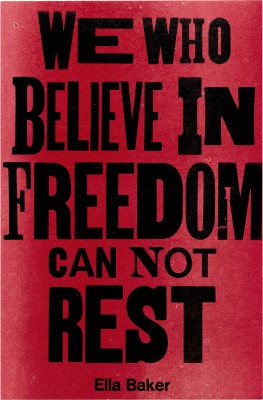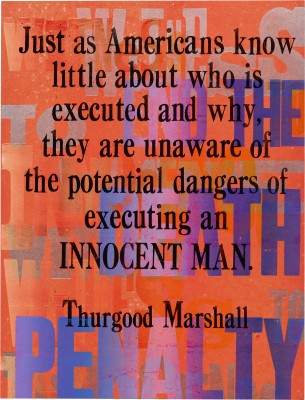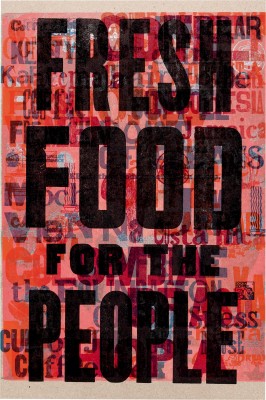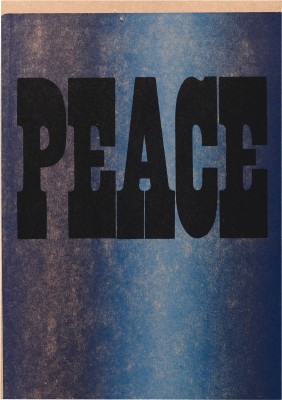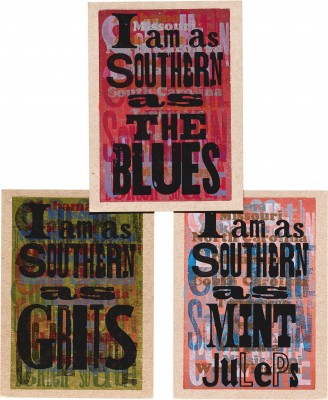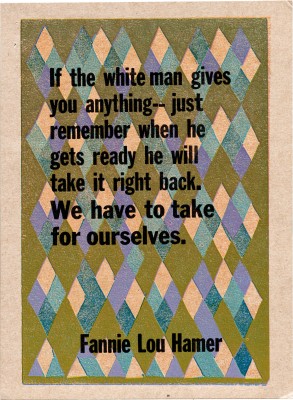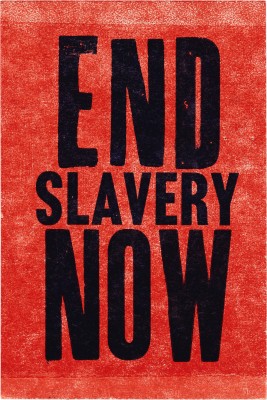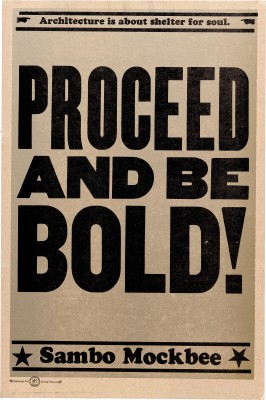News
This Just In: Amos Kennedy Jr.
We’re honored to share the wit and wisdom of the humble but powerful provocateur. Dozens of his prints are now at the Archive.
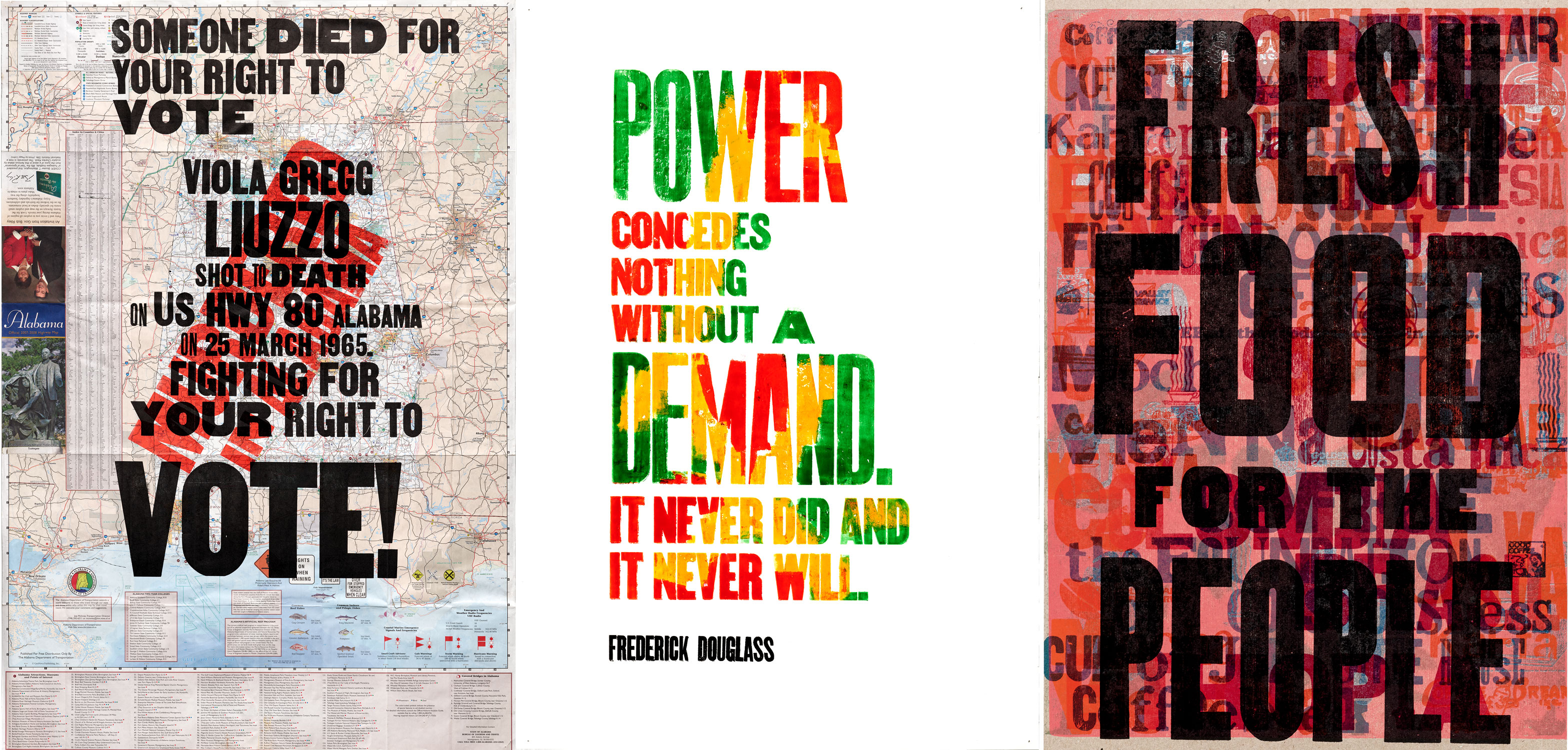
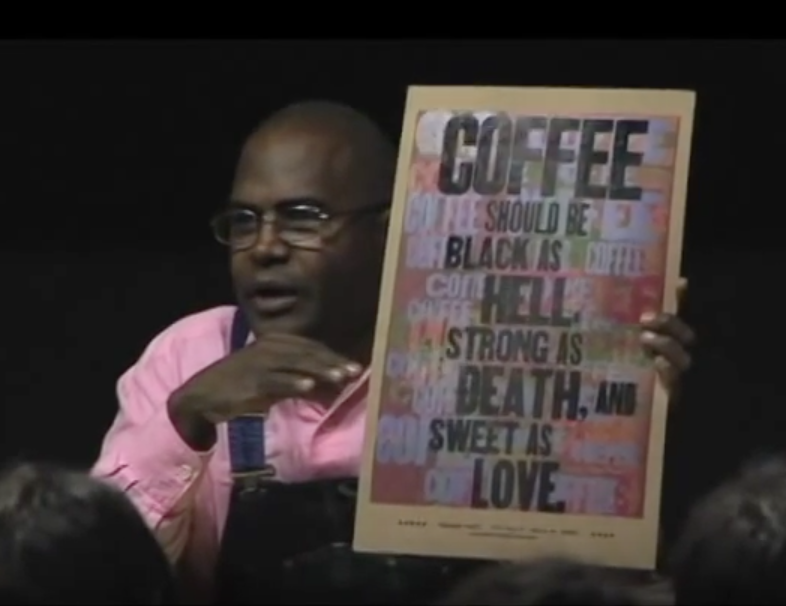
Don’t call Amos Kennedy Jr. an artist. He is someone who “makes stuff” — a commercial printer, not a printmaker. Kennedy is deliberate in making these distinctions. In fact he never set out to become a printer. His career began in Chicago as a systems analyst for AT&T, living a seemingly comfortable middle-class lifestyle. Everything changed in 1988. At age 38, Kennedy visited Colonial Williamsburg in Virginia and saw a printing press for the first time. It was love at first sight. Within five minutes he decided to quit his job and become a printer. The rest is history.
Since then he has made his way from York, Alabama, to Akron, Alabama, to Gordo, Alabama, and finally Detroit, Michigan. Along the way he trained in fine printing at the University of Wisconsin–Madison and taught graphic design at the University of Indiana before dedicating himself to printing full-time.
He often refers to himself as a “humble negro printer”.
“I tell people that I am ‘negro’ because most people mistake me for africanamerican. There is a profound difference between ‘negro’ and africanamerican. My ancestors were the enslaved peoples whose labor built the wealth of this civilization.”
It’s no coincidence his daily uniform consists of his trademark blue overalls and pink dress shirt. Aside from its functional purpose, he understands that wearing this particular clothing means people will read him in a very specific way. He shows up to all kinds of events in this uniform, urging people to answer the question, “What does it mean to be an artist who doesn’t dress like one?”
Kennedy’s desire to challenge carries throughout his work. These provocations are part of an effort to change how viewers perceive and understand art, and in a macro sense, the world we live in. Each poster is letterpress printed on chipboard using handset wood and metal type and brightly colored, oil-based inks. His process involves variable overprinting on multiple layers of text, so no two pieces are exactly alike.
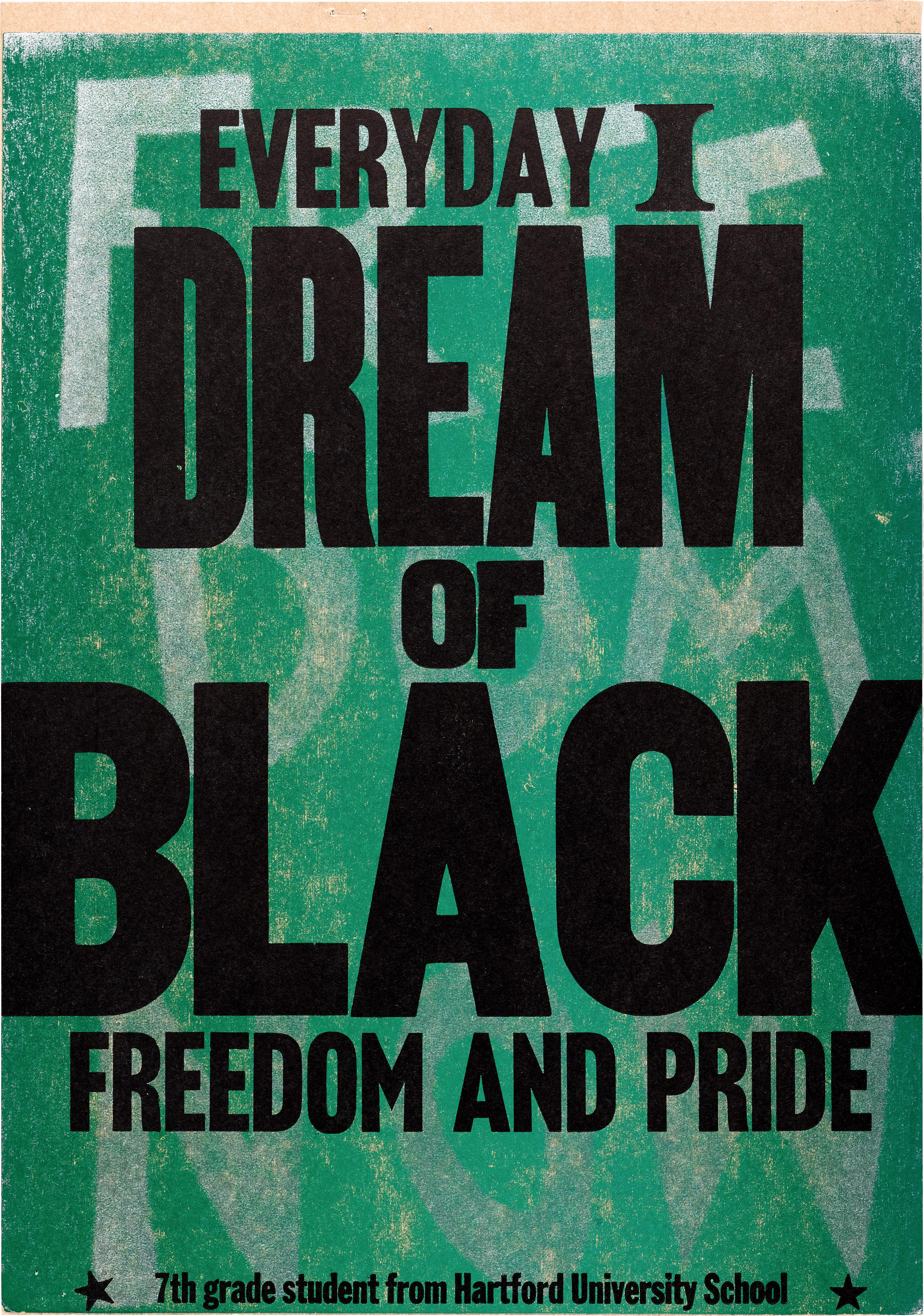
His posters are bold in every sense of the word. They force us to reconsider what belongs on posters and what is considered art in the first place. Even attending one of his art shows is an unconventional experience. Archive staff experienced this first-hand at a recent show at The Compound Gallery in Oakland. Instead of framed and mounted in the traditional way, his posters are stapled to walls, haphazardly hung around the room. The treatment accentuates the immediate and ephemeral quality of the prints, and prices ranging from $10–50 a piece draw attention to issues of affordability. Who should be allowed to participate in experiencing and collecting art?
That’s a large reason why Kennedy embraced letterpress printing. It allows him to produce easily and quickly, ensuring mass production and distribution, one of the main goals of his work. Kennedy has a lot to say and he wants people to know it.
“I was told years ago that everything you do is political,” Kennedy says, “and so my art is really a political statement. And the story of my art, when someone can actually cipher it out, is a statement of what I envision the world to be.”
What’s next for Kennedy? After an Indiegogo campaign successfully raising over $30,000, he is in the process of developing the Printing Plant, the Printery of the Americas, a hybrid print shop, book bindery, and handmade paper mill. His goal is to pay it forward the same way generations of elder printers did for him when he was a growing printer.
Letterform Archive is proud to hold several dozen Kennedy prints, ranging from 6-✕-8-inch handbills and 11.5-✕-16.5-inch posters to several oversized roadmaps overprinted with messages of voting rights and social justice. In keeping with the maker’s intent, we aim to make these prints as accessible as possible; visits to the Archive are free.
— Joyce Yin, Editorial Intern
A Selection of Amos Kennedy Jr. Prints at Letterform Archive
All images in this gallery are high res and zoomable. Click an image to enter fullscreen view, then pinch (on trackpad or mobile) or use browser zoom (on desktop).

